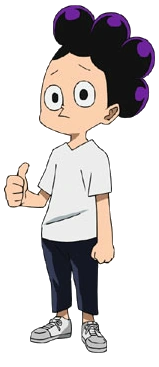
You can, but it’s not advisable Unless you watch a lot of anime and devote yourself to the anime community entirely, it’s not really advisable to learn Japanese via anime. Even then, it is possible, but it’s not the best way to do it.
Full Answer
Can You Learn Japanese by watching anime?
Perhaps the best part about using anime to learn Japanese is that it makes it a lot of fun! You get to learn a language and be entertained at the same time. Watching a fun show and then recognizing certain words that the characters say is a very rewarding experience that keeps you coming back for more.
How long should an anime class be?
Some of them can get up to an hour long each, and that’s only for the first watch through. Since the class requires students to analyze the shows, certain episodes will probably have to be rewatched several times, turning a once-pleasurable activity into potential torture. Here’s how Japanese netizens reacted to seeing such an intense anime course:
Is it possible to watch anime in Japanese with English subtitles?
This time you will be watching it 100% in Japanese, but if you’ve been studying the common words for that anime and you just watched it while reading the English subtitles, then you are actually going to recognize and understand a lot of what’s being said!
Is it rude to talk in anime?
Japanese in anime contains various slang terms which are not used within conversational Japanese. Applying anime-style Japanese in a normal conversation would make you sound rude, immature, or clueless when it comes to social interactions (whether formal or informal).

Do Japanese students watch anime?
Yes, they do. Almost all my class watch anime. They like series like Bakemonogatari, UtaPri, Haikyu!!, Naruto, One Piece and so. They also like talking about voice actors and openings, endings.
Do Japanese high schoolers watch anime?
Responses were gathered from 1,041 Line-using high school students (520 boys and 521 girls) who were asked, “How often do you watch anime?” When the results were tallied, the majority, 54 percent, said they watch anime at least once a week, and nearly one in four said they watch anime at least four times a week.
Does the average Japanese person watch anime?
According to a survey conducted by the Nippon Research Center in October 2019, around 33 percent of people in Japan stated that they often read manga or watch anime.
Is learning Japanese a weeb thing?
Learning doesn't make you a weeaboo. So what if you are a fan of anime or manga or Japanese dramas? It's the same rationale behind classes putting up sticky notes on blackboards or windows with the words for “the blackboard” or “the window” on them. It's something you can relate to, something you see in school life.
Is it weird to like anime at 30?
There is no such thing as being too old to watch anime. Anime is a term that refers to a bunch of animated works coming from Japan. There are various genres directed at various demographics. Fortunately, age is not detrimental in deciding whether or not we like something!
Does everyone in Japan like anime?
Not All Japanese People Like Anime. So, yes, anime is popular in Japan.
Is anime more popular in Japan or America?
It's more popular in Japan by a country mile, made by the Japanese for the Japanese. That's the way most Japanese things work, they're very focussed on what their own country's consumers want first, everyone else comes a very distant second.
What country is anime most popular in?
The Japanese shows draw the most demand among foreign content in the US in the first quarter of 2021 with 30.5%. The demand for anime keeps growing with popular shows like Attack on Titan, My Hero Academia, Jujutsu Kaisen, etc....8. . Malaysia.FavoriteMost Well KnownDragon BallDragon Ball4 more rows•Oct 22, 2020
What do Japanese think of anime?
Anime, for most japanese, is nothing more than a form of entertainement. They dont think much of it, the problems they may have with it, video games or anything really, is the same any sane person shall have: deviant uses of the medium.
How do you get rid of Weebs?
How To Stop Being a Weeb, a 12 Step ProgramBathe Regularly. ... Don't use Japanese Words in Everyday Conversations. ... Learn and Practice Social Skills. ... Read Philosophy. ... Have Non-Japan/Anime Interests and Hobbies. ... Develop your Emotional Intelligence. ... Watch Classic Films. ... Look After Your Health.More items...•
Is it OK to be a weeb?
Weeb is short for weeaboo, an often derogatory term used for people who are obsessed with Japan and supposedly Japanese culture. The term first sprang into existence from a comic strip in which it was used as a nonsense gag that meant nothing.
How do I stop being an otaku?
Consider taking a break. You can also try to take a break from anime by not watching any anime or reading any manga for a certain period of time. Try it for two weeks, and see how you feel. You might surprise yourself by finding that you have discovered other hobbies and interests to fill up that void.
How long does it take to watch anime twice?
Since most anime episodes are about 20 minutes long, watching it twice in a row will take about 40 minutes in total. Make sure you pick a good one, since you don’t want to get board on that “Japanese only” replay. Also, all of this is going to be harder if you’re just starting out with Japanese.
How long does it take for a baby to learn a language?
Babies literally take years to learn a language this way. And a lot of times people talk to them in short, simple sentences. Plus, babies tend to participate with the language more than most people who passively listen to it.
Can you watch anime while studying?
You first study them in isolation, that is, not while watching anime. And then you watch the anime afterwords to hear the words that you studied in action. (1) Get a list of the most common words used in the specific anime that you watch to watch.
Is it hard to read and listen at the same time?
First of all, it’s really hard for humans to take in more than one set of sensory information at a time. That is, it’s hard to listen and to read at the exact same time. You’re probably pretty good at it with English because you’ve been doing it for years and they align with each other perfectly.
Can Japanese listen to anime?
They are able to fully hear the different sounds of each language and there is very little crossover. How this applies to Japanese with anime is that when you are watching it, your brain is going to ignore the Japanese sounds that you’re not used to hearing.
Why do people quit watching anime?
Expect longer, if not motivated. Most people quit when learning for anime because desire to learn language is not strong enough. Very hard subject.
Can I watch Naruto unaided?
The thing you have to realize is that by the time you can watch an episode unaided, you're pretty much going to be fluent. What I mean by this is that there's no, "I only want to be fluent 'enough' to watch Naruto." You're in it for the long-haul.

Do Japanese People Still Watch Anime?
Anime vs Manga
Is Anime Or Manga More Popular?
Is Anime Growing in The West?
Why Anime Is So Popular
Conclusion
- In conclusion, Japanese people do watch anime, but not as much as you might think. It is mostly popular among young Japanese audiences, while manga is the more popular overall, enjoying a broader audience that ranges from young children to adults in their 30s and 40s. Anime might be more financially successful in Japan, where it was created, but it...
The (Wrong) Way That People Use Anime to Learn Japanese
The Two Things That Hold You Back
How to (Actually) Learn Japanese Using Anime
Anime Makes Learning Japanese Fun
- Perhaps the best part about using anime to learn Japanese is that it makes it a lot of fun! You get to learn a language and be entertained at the same time. Watching a fun show and then recognizing certain words that the characters say is a very rewarding experience that keeps you coming back for more. And when you see learning Japanese as a fun ga...
Popular Posts:
- 1. can u sell seld made anime figures
- 2. what sites can i watch anime
- 3. a polar bear in love anime
- 4. are lost pause and the anime man still friends
- 5. are fireworks flat or round anime
- 6. when is sasaki to miyano anime release date
- 7. a-channel anime
- 8. where to watch spirit chronicles anime
- 9. can't stop it vision anime
- 10. how many seasons of bleach anime